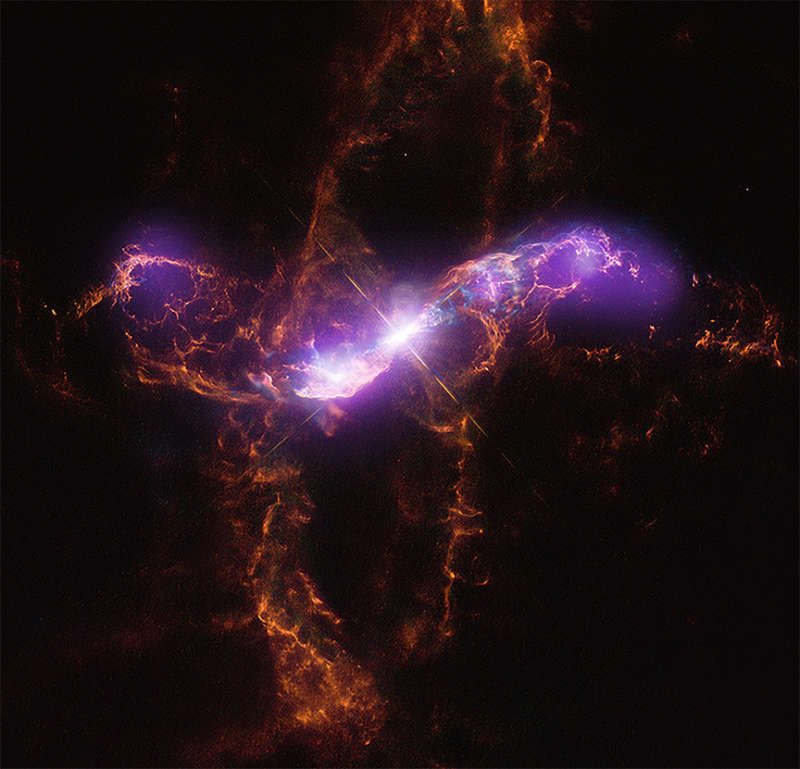Credit & Copyright: X-ray: NASA/CXC/SAO/R.
Montez et al.; Optical: Data: NASA/ESA/STScI,
Processing: Judy Schmidt (CC BY-NC-SA)
Explanation:
Variable star R Aquarii
is actually an interacting binary star system,
two stars that
seem to have a close symbiotic relationship.
Centered in this
space-based optical/x-ray
composite image it lies about 710 light years away.
The intriguing system consists of a cool
red giant star
and hot, dense
white dwarf
star
in mutual orbit around their common center of mass.
With binoculars you can watch as R Aquarii
steadily changes its brightness over the course of a year or so.
The binary system's visible light is dominated by the red giant,
itself a Mira-type long period
variable star.
But material in the cool giant star's extended envelope
is pulled by gravity
onto the surface of the smaller, denser white dwarf,
eventually triggering
a thermonuclear explosion, blasting material into space.
Astronomers have seen such outbursts over recent decades.
Evidence for much older outbursts is seen in
these
spectacular structures
spanning almost a light-year as
observed by the Hubble Space Telescope (in red and blue).
Data from the Chandra X-ray Observatory (in purple) shows
the X-ray glow from shock waves created as a jet from the white dwarf
strikes surrounding material.
1999 2000 2001 2002 2003 2004 2005 2006 2007 2008 2009 2010 2011 2012 2013 2014 2015 2016 2017 2018 2019 2020 2021 2022 2023 2024 2025 |
Yanvar' Fevral' Mart Aprel' Mai Iyun' Iyul' Avgust Sentyabr' Oktyabr' Noyabr' Dekabr' |
NASA Web Site Statements, Warnings, and Disclaimers
NASA Official: Jay Norris. Specific rights apply.
A service of: LHEA at NASA / GSFC
& Michigan Tech. U.
|
Publikacii s klyuchevymi slovami:
symbiotic star - simbioticheskie sistemy
Publikacii so slovami: symbiotic star - simbioticheskie sistemy | |
|
Sm. takzhe:
| |
